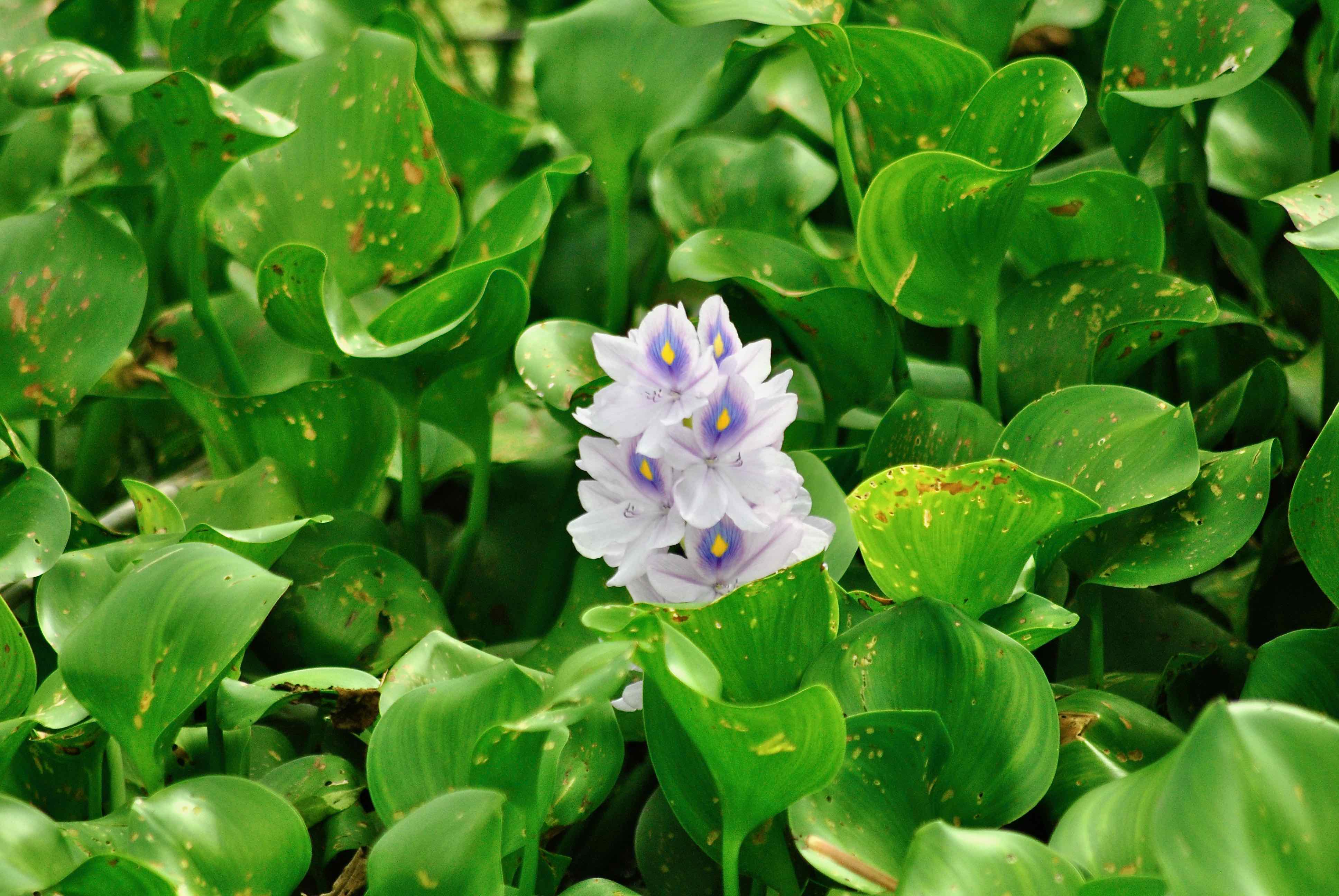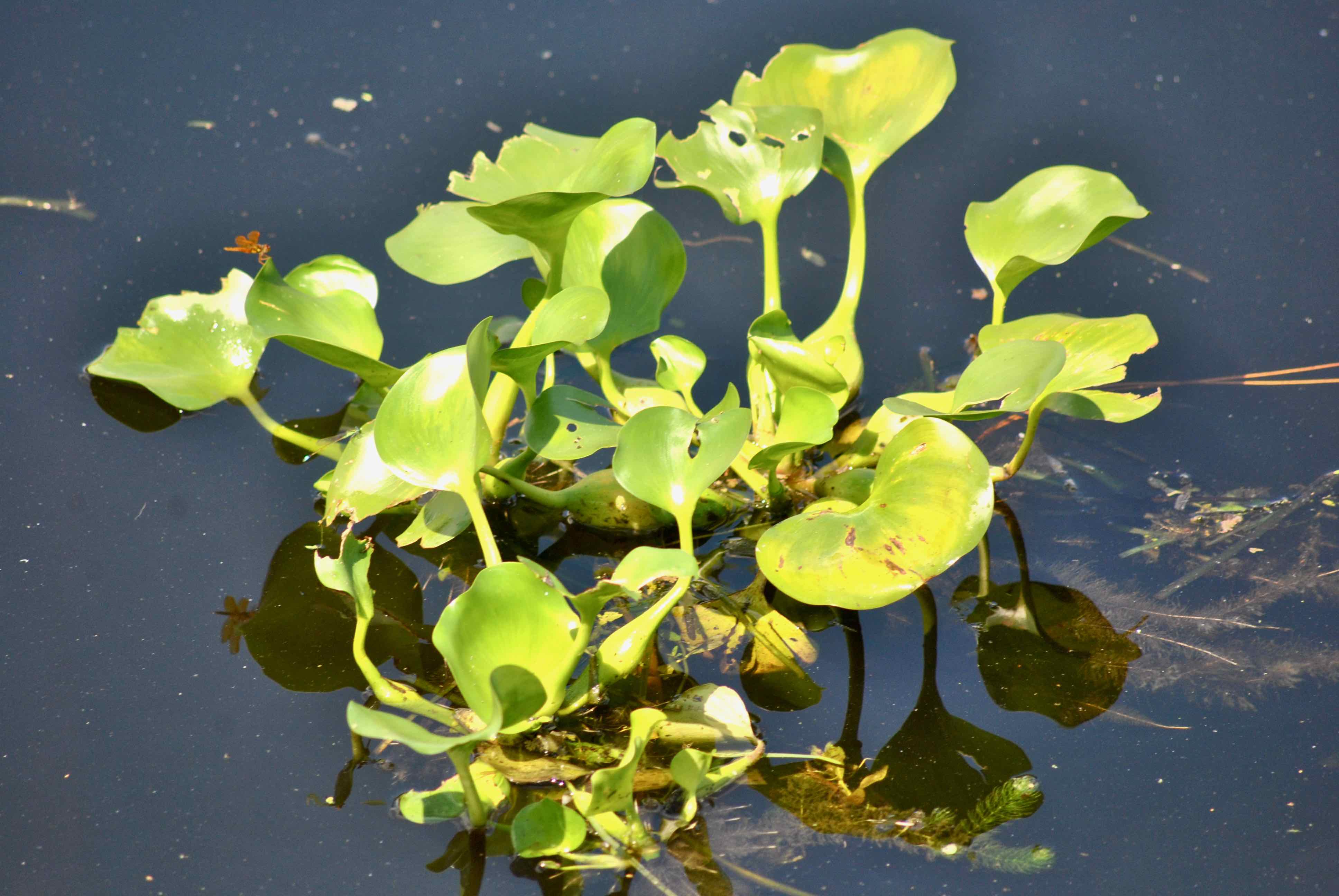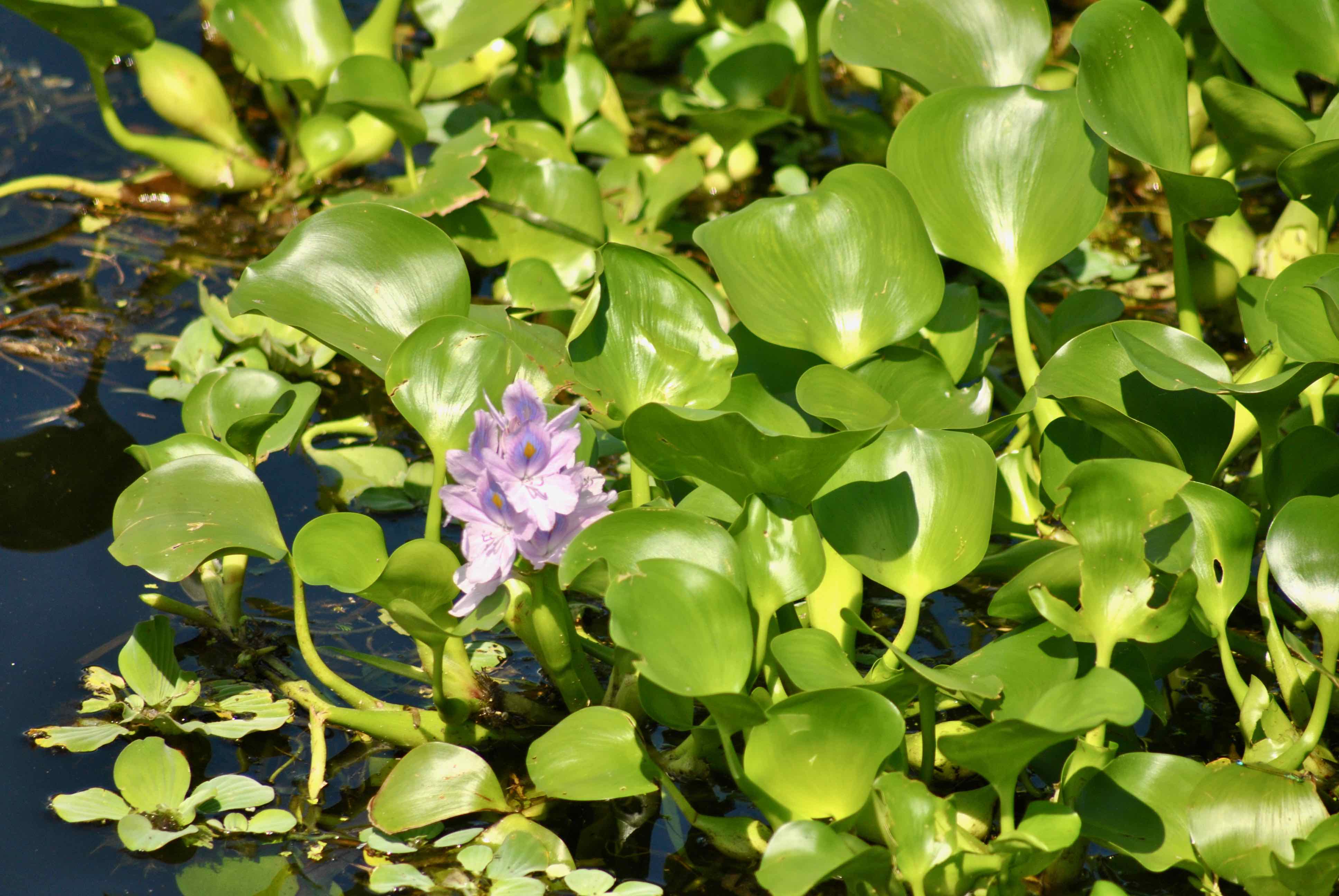
Water hyacinth, photographed at Stormwater Treatment Area No. 1, Loxahatchee, Palm Beach County, in June 2015.
No doubt about it, water hyacinth, Eichhornia crassipes, is beautiful. Equally, there's no doubt that is a giant pain in the butt in more ways than one can imagine.
It can choke even large waterways to the point that they become impenetrable to man and beast (fish, waterfowl) alike. It can grow so dense that light can't pass, killing off other aquatic life and reducing oxygen content in the water to dangerous levels.
Even its positives have negatives. It can be great in garden ponds not only because of its looks but because it filters excess nutrients and contaminants out of the water. On the other hand, it will clog mechanical filters, allowing the water to become dirty. Water hyacinth is so bad that the University of Florida has labeled it the state's worst floating weed. It's an aquatic pest pretty much everywhere it's found, which is pretty much around the globe.
Water hyacinth is a native of Brazil and the Amazon Basin. Pretty much every source we reviewed agree that It came to the United States in 1884 during the Southern States Cotton Exposition in New Orleans. Attendees were given plants to take home. A certain Mrs. Fuller of Edgewater attended the expo and took home a few plants that she placed in her garden pond. As the story goes, she was so taken with their beauty that she decided to share them by dumping a bunch into the St. John's River near Palatka. Settlers along the river wanted to spruce up the waterway so they spread water hyacinth along its course and along its tributaries. Within a decade, water hyachinth completely choked the St. Johns; by the 1950s, water hyacinth covered 126,000 acres of the state's waterways.
Florida now classifies water hyacinth as a Category I invasive and its sale is prohibited. But Florida is hardly alone as seeing water hyacinth as a problem plant. According to the United States Department of Agriculture, water hyacinth is found in 22 states, plus Puerto Rico and the Virgin Islands. It's also found as far north as Canada. Six other states list it as a noxious weed, prohibited plant or potential invasive. There are dealers who sell water hyacinth on the internet, but won't ship to Florida or any of a number of states that prohibit its sale.
Water hyacinth has thick, shiny leaves that form a rosette at the base of the plant. The leaf stems can inflate and spread out when the plant has room or become thinner and rigid when it is crowded. It sends out spikes of flowers called inflorescences that can reach 20 inches tall and can have as many 15 large, lavender flowers; the blooms are short-lived, but as some die off, others open. Below the water surface are long, feathery roots.
Water hyacinth reproduces both by seed and by vegetative means. Plants send shoots from stem-like parts called stolons. Seeds germinate only under limited circumstances but can remain viable for decades. Vegetative reproduction can be exponentially explosive. A single plant can become 500,000 plants — enough to blanket an acre of water — in only five months. Water hyacinth can form mats so dense that they become islands that support the growth of grasses and even trees, the roots of which add to the strength of the mat itself.
The one limiting factor to water hyacinth is a sensitivity to cold. It needs temperatures to be at least 50 degrees in order to grow and it has only modest ability to withstand freezes. According to UF, it dies back each winter in northern parts of Florida but grows year round down south. The problems that water hyacinth cause are found pretty much everywhere it's found outside its native range. Flora of North America calls it "probably the most aggressive aquatic weed ever known." According to the Global Invasive Species Database, it's found in 50 countries on five continents. In places, it can cover rice fields, clog irrigation ditches, halt fishing and harbor mosquitoes. The mats it forms are so dense and heavy that they can take out buildings in times of flood. And it increases the likelihood of flooding by stopping water flow. Along Lake Victoria in Africa, it's clogged hydro-electric plants and in New Guinea, it's shut down waterways used for basic transportation. One estimate done nearly two decades ago found China spending $12 million annually to rid itself of the plant without effect. It's enough to rank among the top 100 world's worst invasive species.
So how do you get rid of it? It can be raked out, but the stuff literally weighs tons and any plants missed will reproduce so quickly as to render efforts useless. Chemical means have been used (including, believe it or not, sulphuric acid) with minimal effectiveness and major contamination problems. Biological controls in the form of insects have been found to be useful to an extent.
Despite the negatives, water hyacinth is incredibly utilitarian. It's been used medicinally, as food, to make baskets, paper, fertilizer and livestock feed. The latest idea: as biofuel. So far, none of these have proven economically viable or enough to outweigh the problems it causes. Other names for water hyacinth include common water hyacinth, floating water hyacinth and blue shell flower. It is a member of Pontederiaceae, the same family as Florida native duck potato.
Click on photo for larger image
Links for Water Hyacinth



